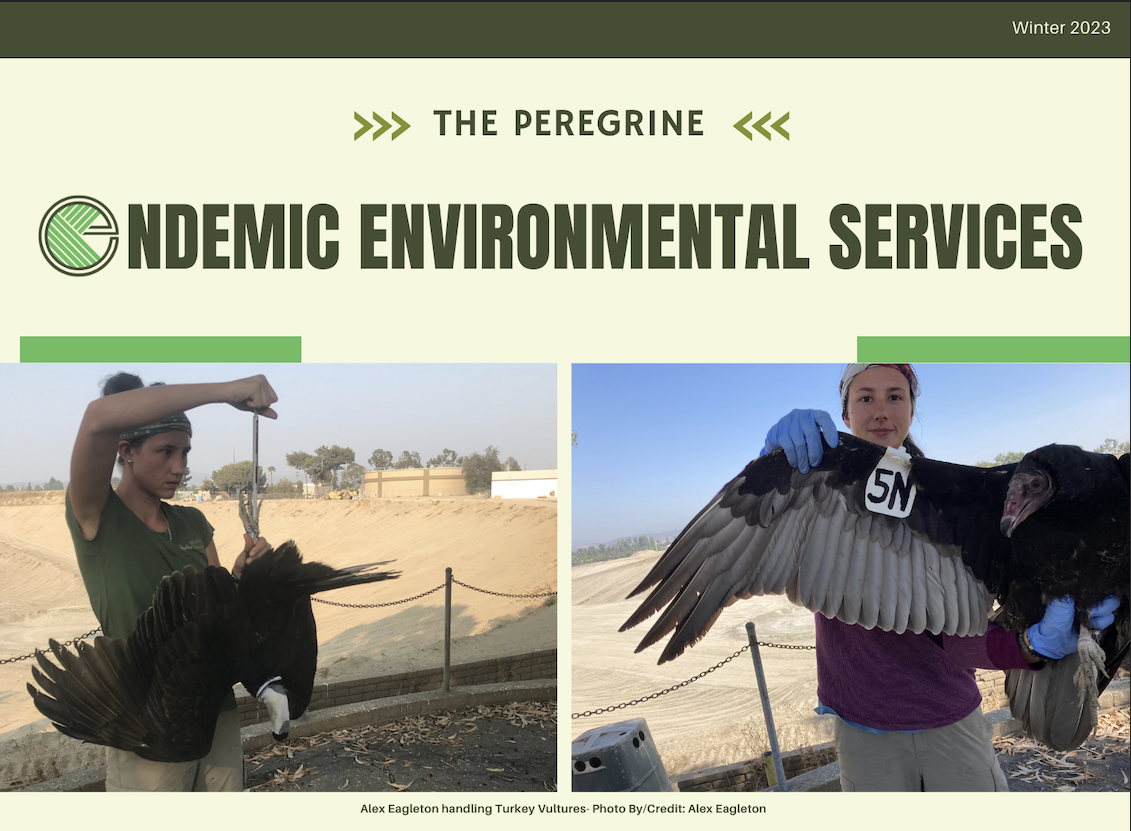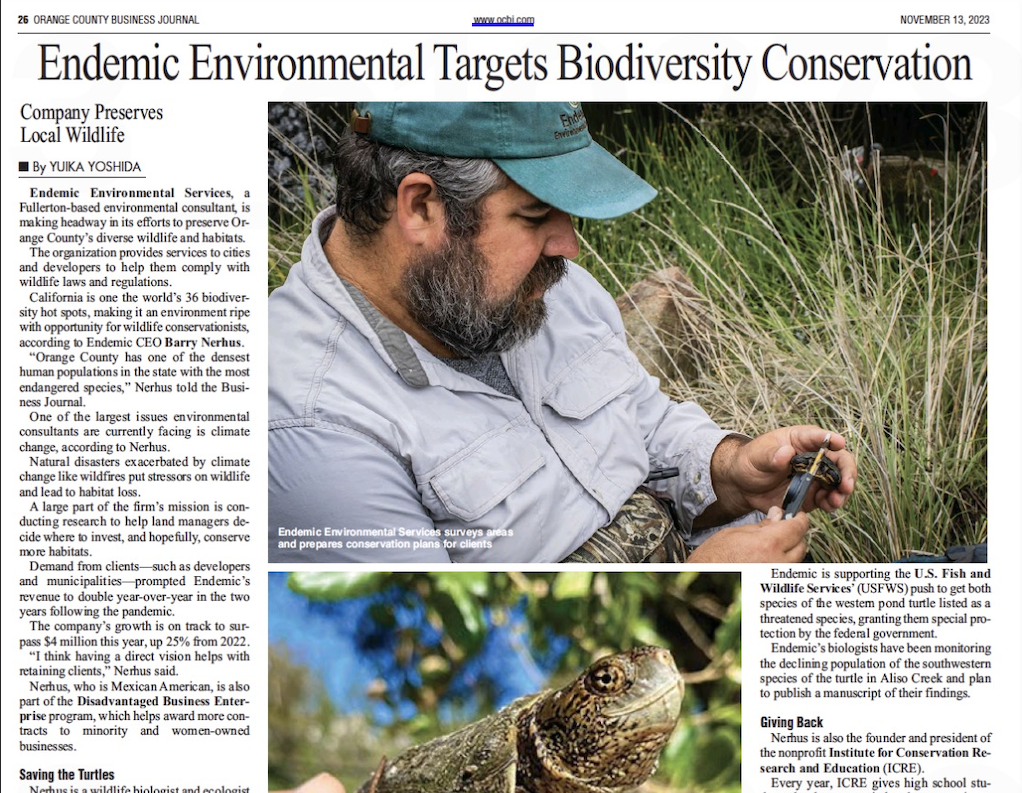The Endemic Eco-Logs

Endemic Celebrates 15th Anniversary!
Endemic recently celebrated its 15th company anniversary, highlighting key accomplishments since its inception in 2009.

Endemic’s Environmental - First Blog
In our first Endemic blog, we explore groundbreaking research from the University of California, Irvine.

Spring/Summer 2024 Edition of the Peregrine Newsletter
A new edition of The Peregrine is out now!

Winter 2024 Edition of The Peregrine Newsletter
The winter edition of The Peregrine 2024 is out now!

Orange County Business Journal - Environmental Social Governance Champions
The OCBJ honors Endemic Environmental Services as a champion in the Orange County area.

Orange County Business Journal - Endemic Environmental Targets Biodiversity Conservation with CEO Barry Nerhus
We are incredibly grateful to the Orange County Business Journal for featuring an in-depth article that shines a light on the work and mission of Endemic Environmental Services.
To see more on past Endemic news and updates, please refer to our archives.
